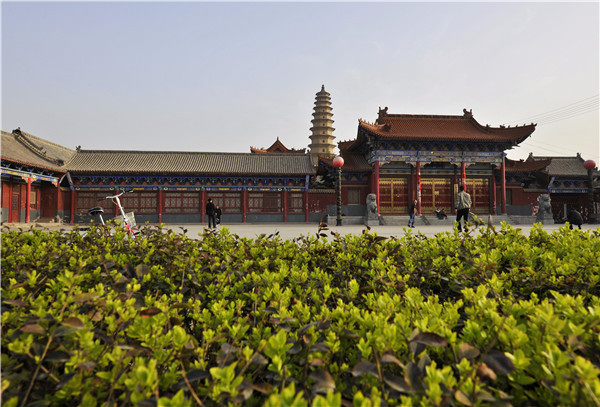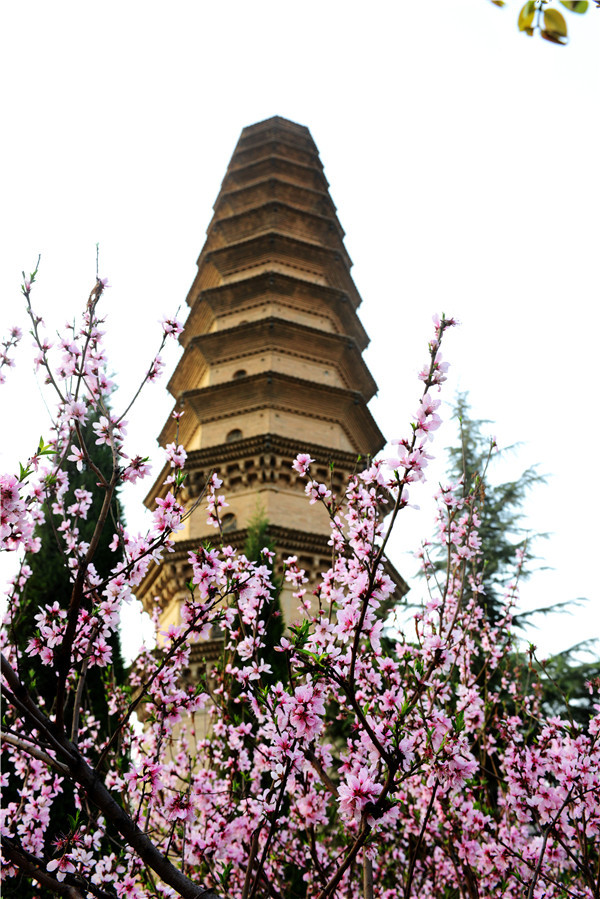
Shousheng Temple Dagoba is located in the west of Xiangkou Village, 0.5 km away form the northeast of Ruicheng County, founded in the eighth year of Xining in the Northern Song Dynasty (1075) and rebuilt in the Ming and Qing dynasties. It is commonly known as "Pagoda Temple", among which, "Pagoda Temple Morning Bell" is listed as one of "Ruicheng Eight Scenes". During the war of resistance against Japan, the temple was destroyed by invading Japanese troops. The Tower from Song Dynasty is the only one which is still retained now. On January 12, 1996, Shanxi Provincial People's Government announced Shousheng Temple Dagoba as a cultural relic protection unit in Shanxi Province. In May, 2013, it was announced as a national key cultural relic protection unit by the State Council.
The tower body is a brick tower with imitation wooden structure, octagonal plane, 13 stories, 46 meters high, south door. False doors are set on all four sides of each floor. The tower is tall and beautiful. Each layer gradually retracted upward into a cone shape. The lower three layers of the tower eaves are brick Dougong (a system of brackets inserted between the top of a column and a crossbeam; bucket arch), completely imitating the shape of wood structure. The eaves of the towers above four stories are all overlaid with a layer of bricks, maintaining the style of jetting-out corbel tower in Tang Dynasty, and the tower is topped by an iron bowl.

The inside of the tower is an empty drum structure, originally with a wooden floor. It can be climbed step by step with the wooden ladder, which was burned by bandits in the early years of the republic of China, and was restored in 2011. There are murals of the Song Dynasty in the pagoda, which are about the providers of Buddhas and Bodhisattvas, with pretty and smooth face shape, strong and smooth line. The painting style of song dynasty is clear and distinguishable. In addition, there are also important stone carvings on the historical evolution of the pagoda temple, "Monk Jieshi Rungong’s Tower Inscription", kept in the county museum.

